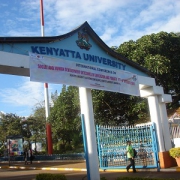e-Development in Kenya: Electrifying Villages & the Benefits of ‘Virtual Kenya’
Previously, I dubbed east-Africa’s ICT hub, Kenya, the Land of the Apps, but Kenya’s wider e-development prospects and challenges are more nuanced than that. We ought to consider a range of intersecting questions.
These bold policy positions are indicative of why Kenya’s success is no fluke. In fact, its concerted focus on and sensitivity to the information poverty of its legion of unconnected people, amid a rapidly transforming and pioneering telecoms sector, is a game-changer. The range of policy positions adopted recently gives credence to this view, particularly the move to rectify the country’s ailing electricity sector and the launch of ‘Virtual Kenya’ last week.
The East-African country will spend US$62 million to electrify 460 trading centers and 110 secondary schools, among other public facilities under the rural electrification program. The ICT sector will also benefit from the $730 million allocated to the Ministry of Energy for the next fiscal year. As I have noted before, this will further bridge the digital divide because none of Kenya’s—or the wider African continent’s— ambitious ICT expansion plans will be achieved without improved electricity infrastructure. According to the World Bank, 70% of Africans are not connected to a power grid.
Resolving the energy sector crisis is pivotal, as it will not only boost the expansion of the ICT sector, but also improve livelihoods. The successful ‘Songa mbele na solar‘ (Move ahead with solar) campaign of 2010 offers lessons, too. It shows that any effort to electrify Kenya’s more rustic regions will require a diversified energy mix—and given the state’s economic constraints, solar—readily accessible and easily tapped—ought to be an integral part of that mix. The ‘Songa mbele na solar” reached over nine million Kenyans, improving productivity by extending business hours, and buttressing lives through reduced air pollution.
It is clear to me that there is a growing, albeit very slow, trend towards merging the questions of sustainable development, particularly clean energy and natural resources conservation, with the ICT4D push. I am inclined to think that the link between the two ought to be further cemented. I consider the launch of ‘Virtual Kenya’, an interactive web platform for charting human environmental health, to be a step in that direction. ‘Virtual Kenya’, which was developed by the Nairobi-based web mapping technology firm Upande Ltd, in collaboration with the US-based World Resources Institute, caters to the needs of Kenya’s unconnected as it comes with “related materials for those with no access to the internet”. So, I think this is important on two fronts: first, it tackles the information divide; second, it broadens the pool of people who have ready access to environmental and health information.
It is easy to imagine the impact this will have on an educational landscape where schools and universities are constrained by outmoded data sets and other resources. Ready access to high quality, spatial data and cutting edge mapping technology on an interactive platform is golden.
For more details on ‘Virtual Kenya’, please go here.







































